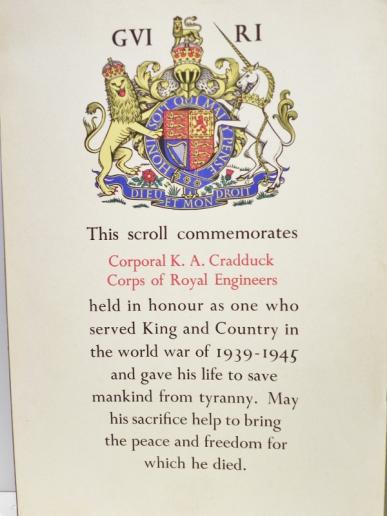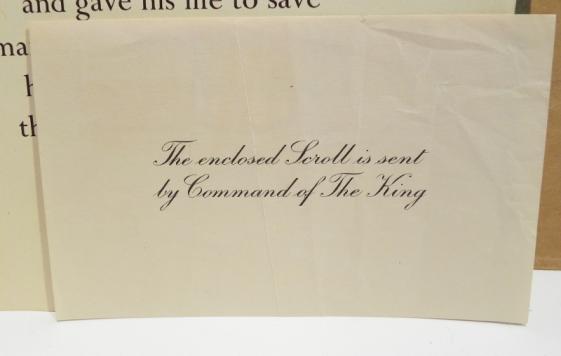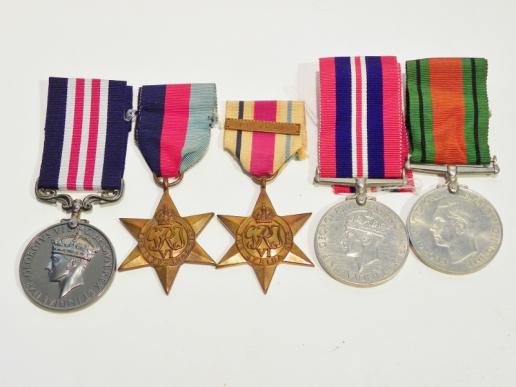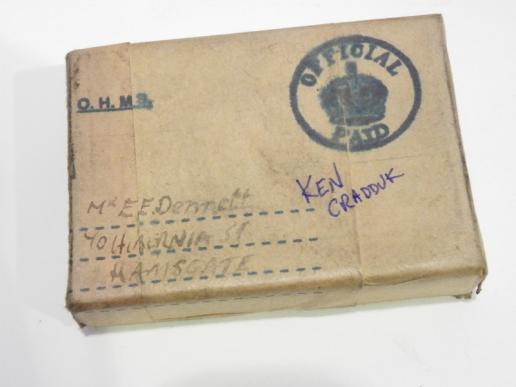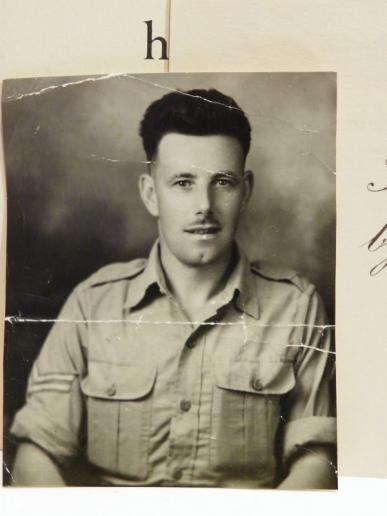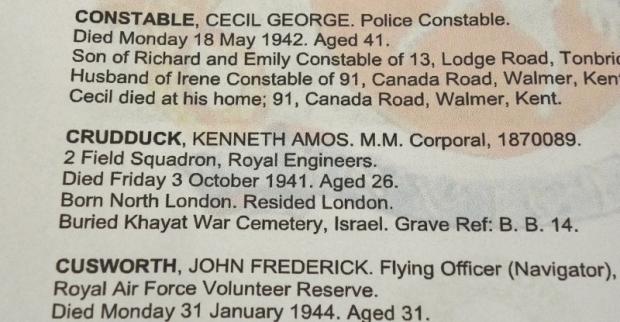MM Gallantry Group to Cradduck RE 7th Armoured. Dessert Rat Casualty. MM for Tobruk
I believe a very important group comprising of medals, photo and Scroll all to 1870089 Corporal Kenneth Amos Cradduck of the 2nd Field Squadron Royal Engineers. This lot comprises of the 1939-45 star, the Africa Star, the Defence Medal, the 1939-45 war medal and a George VI Military Medal replacement copy. More about that later. Also his original death scroll, this is still in its original envelope of issue.
Kenneth Cradduck was born in 1925, in London. He was a Kent Police Constable before the war started and in 1939 he volunteered into the army. Probably because he was in a responsible job and showing himself to be a good leader he was soon promoted to the rank of Corporal in the Royal Engineers. He must of undergone training in bomb and mine disposal and trained in infantry and close combat fighting to be posted with the 2nd Field Squadron RE. the 2nd Field squadron or Field Coy formed part of the 7th Armoured division (Dessert Rats) These were the units that went onto the battlefield and did activities (mostly under fire) like building bridges, installing the Bailey Bridge, laying or removing mines, repairing roads, demolishing roadblocks and bridges, plus lots of other general tasks in combat. They were also trained in close combat and to use a verity of weapons so that they could defend themselves if necessary.
All an Engineer had to clear a minefield was nothing more than the tip of his bayonet to feel for mines with, until the arrival in the Western Desert a Mine Detector in 1942. To clear barbed wire areas they used Bangalore Torpedo's, Satchel Charges, or even just their wire cutters. Also they had to destroy anything that lay in the way of the tanks or armoured vehicles, they would also use TNT or Dynamite, so they were very well versed in all sorts of explosives and to cap it all, most of the work was done while under fire.
On January 21st 1941 Corporal Craddock was in charge of an RE detachment of three sappers whose role was to put Bangalore Torpedo's in the barbed wire defences surrounding Tobruch (Tubruk). The party was in the charge of an Infantry Major (with a company of his battalion supporting). Having successfully accomplished their task, the party came under very heavy fire, the major in charge and all accompanying infantry became casualties. Corporal Cradduck rallied the remainder in the dark and found himself to be the only unwounded man. Carrying one infantryman with them, he directed the party through the very heavy fire to saftety. It is quite certain that had it not been for Corporal Cradduck’s cool direction of the remaining members of his part all would have been lost.
For this action he was awarded the Military Medal. The above has been taken from his citation, on which his name is miss-spelt Craddock.
After the action in Tubruk it seems Cradduck was in the Palestine area, Kenneth Cradduck died on 3rd October 1941 and he is now remembered with honour at the Khayat Beach War Cemetery Palestine. Here needs researching. I haven’t got too involved in his death, researching into the 7th armoured and the 2nd Field Squadron RE timeline will uncover some explanation on how he lost his life, but looking at his duties in his unit, it almost seems inevitable he would become a casualty before the war was over. He is also remembered on the Kent Police Second World War memorial.
Also included is a copy of his MM citation, commonwealth war graves certificate and probate. This is probably the saddest part, it looks like Kenneth had no family, his estate was left to a fellow police officer Edward Ernest Dennett.
Corporal Cradduck’s medals are still in their original box of issue addressed to Mr E Dennett, C/o 5 Hibernia Street Ramsgate; they come with just one small photograph of him. This is not in wonderful condition but shows Craddock in his warm weather uniform displaying his corporal strips. This was folded inside the medal box.
The Military Medal was missing from his medals, this could mean a couple of things, one, his medal was sold or scrapped at some point, or, which I think may be true, he was never issued it. Having no blood next of kin it was never issued. It was an immediate award and because he was sadly killed soon after he was awarded the medal, it is very unlikely it was issued in the field. I have personally added this MM, it is a very good quality replacement. The best I could find without buying an erased medal. I just feel, the gallantry award should be with what remains of his effects. His medal group etc now comes mounted for display, framing, or safe storage.
An amazing, and I think a very important piece of Royal Engineers and Desert Rat’s history. An extremely brave young man that lost his life in service for the cause of freedom at only 26 years old.
Code: 22496


